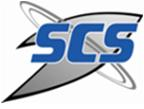Tutorials
The following tutorials have been confirmed. They will be held on Sunday, July 11th (during the afternoon).
Tutorial #1
Computer Assisted Exercises and Simulation
Tutorial Presenter: Dr. Erdal Cayirci
Abstract
Contemporary security threats, warfare paradigms, composition of headquarters, complexity of operations introduce new challenges for the decision making and operational planning processes and operating procedures of headquarters. Operational headquarters are often composite organizations made up of international military staff augmented by governmental and nongovernmental, national or international organizations. This fact further exacerbates new challenges introduced by the new generation of warfare, which makes the training of headquarters more and more complex. Emerging combat modeling and information technologies offer effective approaches that can tackle the complexities of this task. Therefore, computer assisted exercises (CAX) aim to immerse the training audience in an environment as realistic as possible, and to support exercise planning and control personnel in such a way that they can steer the exercise process towards the exercise objectives as effective as possible. It has become the main tool for the headquarters’ training.
The tutorial is designed as a half day course on computer assisted exercises. It provides advanced information on military simulations and CAX, and has two parts. The first one introduces fundamentals and key issues related to the military simulation. In the second part CAX planning and execution related issues and technologies are elaborated. The topics that will be covered in the tutorial are as follows:
- Military and civilian exercises
- Military simulation and combat modeling
- Standards related to military simulation
- CAX architectures for military and large scale civilian complex crises management exercises
- CAX process for military and large scale civilian complex crises management exercises
- CAX support tools
- Communications/Information System Issues, Technical Risks and Risk Mitigation
- Exercise Centers and Facilities
Erdal Cayirci graduated from Army Academy in 1986 and from Royal Military Academy, Sandhurst in 1989. He received his MS degree from Middle East Technical University, and a PhD from Bogazici University both in computer engineering in 1995 and 2000, respectively. He retired from the Army when he was a colonel in 2005. He was an Associate Professor at Istanbul Technical University, Yeditepe University and Naval Sciences and Engineering Institute between 2001 and 2005. Also in 2001, he was a visiting researcher for the Broadband and Wireless Networking Laboratory and a visiting lecturer at the School of Electrical and Computer Engineering, Georgia Institute of Technology. He is currently Chief, CAX Support Branch in NATO’s Joint Warfare Center in Stavanger, Norway, and also a professor in the Electrical Engineering and Computer Science Department of University of Stavanger. His research interests include sensor networks, mobile communications and constructive simulation.
Professor Cayirci has acted as an editor of the journals IEEE Transactions on Mobile Computing, AdHoc Networks (Elsevier Science) and ACM/Kluwer Wireless Networks, and has guest edited four special issues of Computer Networks (Elsevier Science), AdHoc Networks (Elsevier Science) and Kluwer Journal on Special Topics in Mobile Networking and Applications (MONET).
He received the “2002 IEEE Communications Society Best Tutorial Paper” Award for his paper titled “A Survey on Sensor Networks” published in the IEEE Communications Magazine in August 2002, the “Fikri Gayret” Award from Turkish Chief of General Staff in 2003, the “Innovation of the Year” Award from Turkish Navy in 2005 and the “Excellence” Award in ITEC 2006.
He co-authored two books titled as “Security in Wireless Ad Hoc and Sensor Networks,” and “Computer Assisted Exercises and Training: A Reference Guide” both published by John Wiley & Sons in 2009.
Tutorial #2 (SPECTS)
Advanced Statistical Approaches for Network Anomaly Detection
Tutorial Presenter: Dr. Christian Callegari, University of Pisa, Italy.
Tutorial #3
Simio Tutorial
Tutorial Presenter: Professor Ralph C. Huntsinger, Ph. D.
Abstract
The Simio tutorial will concentrate on the discrete systems simulation capability of the software. We start off with an overview of discrete systems simulation and then go into some detail as to how Simio solves queuing systems problems. Waiting line systems are typically manufacturing systems and industrial logistics systems that exhibit “bottlenecks”. Any industrial system that consists of the assembly of multiple parts and diverse components may be simulated by Simio and multiple “what-if” scenarios may be investigated before any actual manufacturing or assembly takes place. Case studies of basic systems will be discussed and a demonstration of the working software will take place.
In addition to Simio, the BLUESSS simulation software will be demonstrated. BLUESSS is a combined Discrete and Continuous Systems software system, as is Simio. Also the Fluid Dynamics simulation software and the Heat Transfer software also written by Dr Stanislaw Raczynski will be demonstrated.
Professor Ralph C. Huntsinger is President of the International Center for Innovation and Industrial Logistics (http://sites.google.com/site/petrihelo/iciil-contact). He is Emeritus Professor of Mechanical Engineering and Emeritus professor of Computer Science at California State University, Chico, USA (http://www.csuchico.edu). He was Past President of the Society for Modeling and Simulation International (http://www.scs.org). He was Adjunct Full Professor of Computing Science at Humboldt State University, California, USA, Professeur Associe au LITIS Laboratoire d'Iformatique, du Traitment de l'Information et des Systemes, Institut National des Sciences Appliquees de Rouen, France. He is currently Guest Full Professor in BUAA Simulation Center (Beijing University of Aeronautics and Astronautics), Beijing, P.R. China. He is also a Registered Chemical Professional Engineer (MT2530E).


